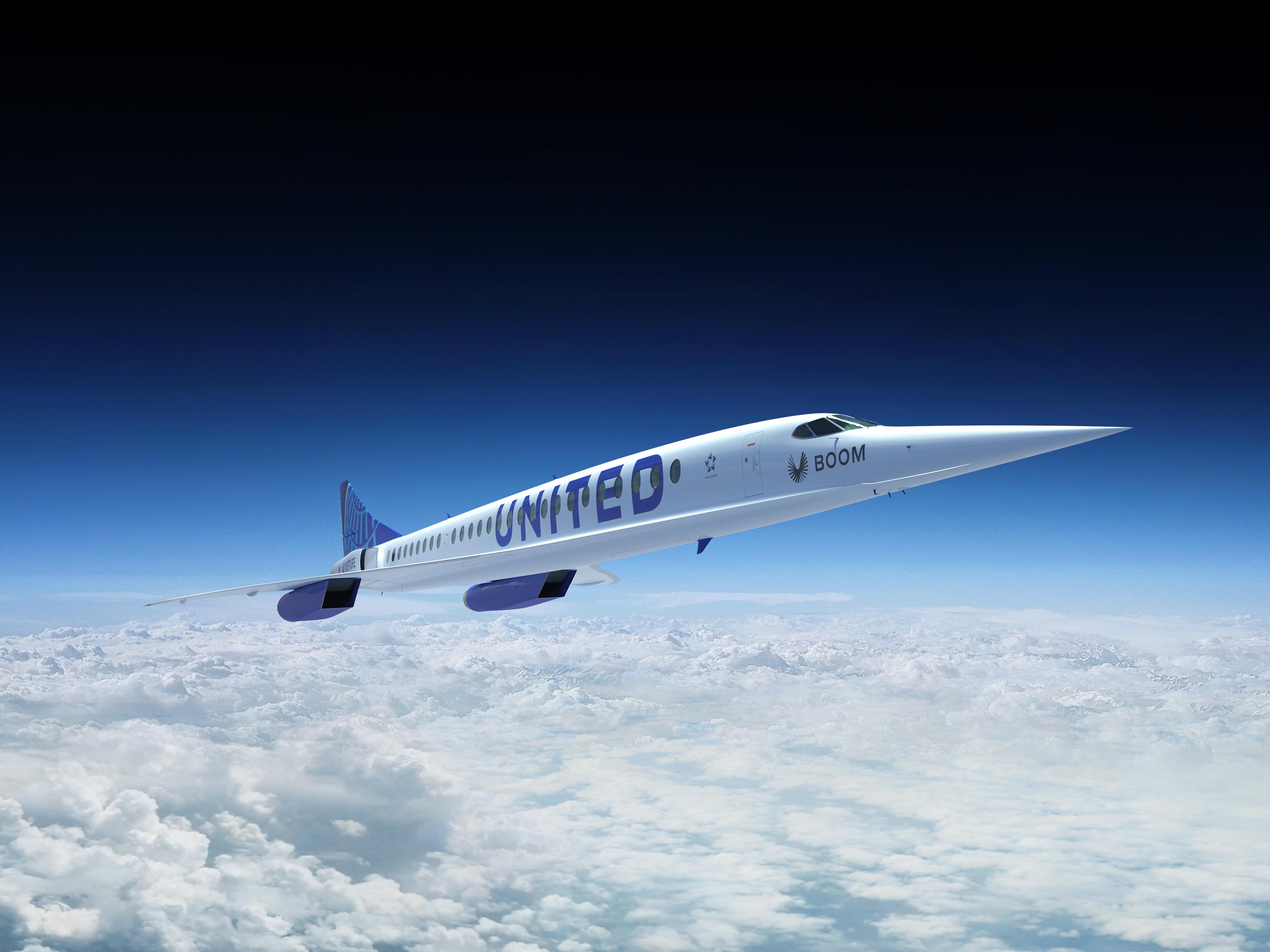Why Returning To Supersonic Commercial Travel Is Far From Certain | 論説:超音速旅客機の復活は夢物語にすぎない

かつて航空会社の経営者たちは、長距離路線における超音速飛行が普及する日が来ると信じていた。1960年代に初の超音速旅客機が開発されたとき、アメリカン航空はアメリカ系航空会社単独で200機の超音速機を運航することになるという予想を発表したほどだ。1960年代の航空会社経営者にとって、乗客が長距離便の高速化(たとえばニューヨーク〜フランクフルト間を4時間で結ぶなど)を望むことは当然のように思えた。
アエロスパシアル社とブリティッシュ・エアクラフト社が開発したコンコルドは1969年に初飛行し、1976年に就航した。しかし結局は20機しか製造されず、運航したのもエールフランスおよびブリティッシュ・エアウェイズのみにとどまり、2003年には引退した。
ユナイテッド航空がBoom社の新型超音速機「Overture」を15機発注し、2029年に受領予定としたニュースを受けて、私は過度な期待をするべきではないと考えてコンコルドの歴史を振り返った。なお、ユナイテッド航空は北米の航空会社として初めてOvertureを発注し、Boom社に出資している日本航空(JAL)も最大20機のオプション発注を行なっている。
しかし、超音速飛行の時代を切り開こうとする航空会社の前には、いくつかの障害が立ちはだかっている。
まず、機体のエンジンがまだ開発されていない。Boom社はエンジン開発についてロールスロイス社と提携しているが、まだ構想段階にとどまっている。エンジンの試作機が完成し試験が進められるまでは、多くの不確定要素がある。そして、最近の航空機用エンジンの開発においては、そのほぼ全てが開発遅延や技術的な問題に悩まされている。
次に、燃料として何を用いるのかという問題がある。コンコルドが抱えていた問題のひとつは、ボーイング747のようなワイドボディ機よりもはるかに座席数が少なかったにも関わらず、亜音速機よりもはるかに多くの燃料を必要としたことだ。航空会社は常に燃費向上を追求しているが、超音速機はそもそも燃費が悪い。
カーボンニュートラルを目指す航空業界の現状を考えると、従来型の航空燃料を用いることは考えられない。実際、Boom社もOvertureが「100%サステナブルな航空燃料で飛行する」と約束している。
サステナブル航空燃料(SAF)はすでに入手可能で、一部の航空会社では実際に使われているが、それらは従来の燃料よりはるかに高価で、入手性も極めて悪い。つまり、エンジンが実際に完成し、SAFの価格と入手性が劇的に改善されない限り、Boom社とユナイテッド航空の発表はあまり真に受けない方がいいということだ。
さらに、利用者がマッハ1.7の旅客機を本当に望んでいるのかという問題もある。Overtureの乗客数は65〜88名とされているが、航空各社が快適なスイートタイプのビジネスクラスを提供していることを考えると、数時間の飛行時間短縮と引き換えに、快適なベッドとプライベート空間を手放そうという利用者はどれほどいるというのだろうか?
そして、運航計画の面でも疑問が生じる。たとえば比較的距離が短い大西洋路線においては、スロットや空港の夜間運用停止時間の問題がある。
最後に、現行の規制の下では飛行ルートも制約を受ける。現在のところ、アメリカとヨーロッパでは陸地上空の超音速飛行は禁止されている。これが変わらない限り、新型超音速機が飛行可能なルートは大幅に制限されることになる。
ユナイテッド航空は同機をニューヨーク〜ロンドン便やサンフランシスコ〜東京便に投入することはできるが、ロサンゼルス〜ロンドン便やシカゴ〜アムステルダム便では陸地上空の飛行が必要になる。
また、アメリカ国内ではビジネス利用が多い、ワシントンDCやニューヨークとロサンゼルスを結ぶような大陸横断路線に投入される可能性もあるが、やはりこれも規制の改正が必要になる。
ボーイング社は最近、採算の目処が立たないとして新型超音速機の開発を断念した。Boom社とユナイテッド航空は、ボーイング社が知らないビジネスケースに気付いているとでもいうのだろうか?
Overtureが航空会社にとって経済的に成り立つ存在になるためには、好奇心旺盛な乗客が「いつか乗ってみたい」と思う以上の存在にならなくてはならない。ユナイテッド航空が採算を確保するためには、定期利用者、特にビジネス客を獲得する必要がある。
もちろんこれらのハードルは乗り越えることもできるかもしれないが、確実に立ちはだかっている。航空会社をはじめとする航空業界全般は、新たな超音速時代を切り開くにあたり、目の前に立ちはだかるハードルを明確に理解して取り組む必要がある。
Aviation Week Intelligence Network (AWIN) のメンバーシップにご登録いただくと、開発プログラムやフリートの情報、会社や連絡先データベースへのアクセスが可能になり、新たなビジネスの発見やマーケット動向を把握することができます。貴社向けにカスタマイズされた製品デモをリクエスト。
There was a time when airline executives believed supersonic flight would become ubiquitous on long-haul routes. As the original supersonic aircraft were being developed in the 1960s, American Airlines publicly predicted a fleet of 200 supersonic aircraft operated by US airlines alone. It seemed obvious to the men running airlines in the 1960s that the public would demand more speed on long-haul travel and that airlines would need to be capable of flying from, say, New York to Frankfurt in four hours.
The Aérospatiale-British Aircraft Corp. Concorde first flew in 1969 and entered service in 1976. But ultimately only 20 Concordes were built and only two airlines, Air France and British Airways, operated them. The Concorde was retired for good in 2003.
I bring up this history to temper expectations in the aftermath of United Airlines’ news that it has ordered 15 Boom Overture supersonic aircraft, with deliveries starting in 2029. United became the first North American airline to commit to the Overture; Japan Airlines is an investor in Boom and has options to acquire as many as 20 aircraft.
But there are obstacles ahead for any airline looking to launch a new era of supersonic travel.
For starters, the engine that will power the aircraft has yet to be developed. Boom has a partnership with Rolls-Royce to develop the engine, but it is still very much in the drawing-room phase. Until a prototype engine is built and tested, there are many uncertainties. And almost all recent new aero engine programs have been beset with delays and technical issues.
Secondly, what fuel will be used to power the aircraft? One of the problems with the Concorde was that it required much more fuel than subsonic aircraft, yet carried far fewer passengers than widebodies such as the Boeing 747. Airlines are always seeking fuel efficiency, and supersonic aircraft are not fuel efficient.
Given the airline industry’s push to become carbon neutral, there is no way the Boom jets will fly with traditional aviation fuel. Indeed, Boom pledges that the Overture aircraft “will fly on 100% sustainable aviation fuel.”
Sustainable aviation fuels (SAF) are available and used by some airlines, but they are much more expensive than conventional fuel and far less available. So until an engine exists and significant change is made in the cost and availability of SAF, it is hard to take Boom and United too seriously.
Then there is the issue of whether there will be passenger demand for a Mach 1.7 speed aircraft. The Overture is designed to carry between 65 and 88 passengers. Given the elaborate, private suite business-class products airlines now offer on long-haul flights, how many passengers will be willing to trade beds and private workspaces for a few hours less in the air?
There is also the question of scheduling. Shorter transatlantic flights, for example, could pose problems in terms of slots and airport night curfews.
Finally, there are the route limitations driven by current regulations. The US and Europe currently ban supersonic flights over land. Unless that changes, the routes that the new aircraft will be able to fly will be severely curtailed.
United would be able to use the aircraft to fly from New York to London or from San Francisco to Tokyo. But routes such as Los Angeles-London or Chicago-Amsterdam would require overland flying.
Another intriguing possibility in the US would be to put the aircraft on transcontinental routes frequented by business travelers, such as Washington DC or New York to Los Angeles. But that would require a change in regulations.
Boeing recently abandoned its plans for developing a new supersonic jet, saying the business case could not be made. What do Boom and United know that Boeing does not?
For the aircraft to be viable financially for airlines, the Overture will have to be viewed as more than a bucket-list experience for curious passengers. United will need passengers flying the aircraft on a regular basis, particularly business travelers, to make it work financially.
These hurdles, of course, can be overcome, but they exist. Airlines and the broader air transport industry will need to approach any new supersonic era with a clear understanding of the challenges ahead.